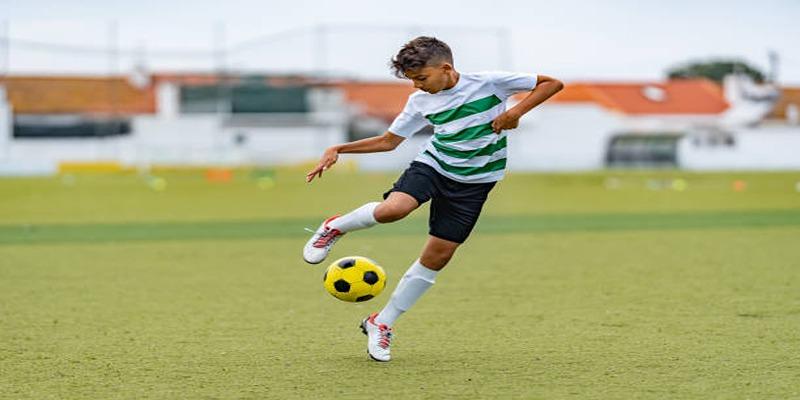It is important to make sure that the heart of a child is healthy first before getting into sports. Though physical exercise is a healthy activity that encourages development, athletic shape, and the mind, ignorance of any underlying cardiac problems can be catastrophic. Parents can ensure that their children can be engaged in a safe manner to protect their health and performance through early identification, the knowledge of warning signals and proactive screening.
The Significance of Cardiac Health in Young Athletes

When the body is on the move, the heart is the engine since it supplies oxygen and nutrients to body organs and muscles. The healthy cardiovascular system in children promotes physical performance and contributes to the growth of the child, brain development, and well-being, among others. Whereas the majority of children are healthy, vigorous sporting activities may induce the hidden heart-related conditions, which might result in sudden cardiac events.
Common Heart Conditions That Can Affect Young Athletes
Even though it is infrequent, there are heart diseases in children that may affect their capacity to engage in sports activities safely. It is important to be aware of these conditions in order to prevent them:
CHDs—These defects are structural and are present since birth and include mild cases of valve defects, and severe defects of the chambers. There are defects that are not noticed until later childhood and can only be seen in the case of physical stress.
Identifying Warning Signs Early
Symptoms that can signify a cardiac issue should be watched by parents and coaches. Immediate actions can help to avoid severe cases:
- Shortness of breath disproportionate to physical effort
- Causeless tiredness or low energy as opposed to peers.
- Episodes of fainting or near-fainting during or after sports
- Chest pain, tightness, or discomfort during activity
- Palpitations or irregular heartbeat
- Sudden collapse or dizziness during physical exertion
Any incidence of these symptoms is a reason to run to the doctor. The negative outcome of ignoring such signs can be complications that are avoidable or even life-threatening.
Role of Pre-Participation Cardiac Screening
Pre-participation screening is a precautionary measure to check the heart of a child is fit to engage in sporting activities. This usually involves:
- Comprehensive Medical History: It is important to conduct an assessment of the risk of the child by gaining an insight into his or family history of heart disease, fainting, or sudden cardiac events.
- Full Physical Examination: A cardiologist can check heart rate, blood pressure, heart sounds and detecting the presence of any murmur or irregular heart rate.
- Electrocardiogram (ECG): An ECG may be ordered in specific situations to measure the electrical activity of the heart, in situations where there are risk factors or worrisome symptoms.
- Echocardiogram: The test is an ultrasound image of the heart that gives a detailed picture of the heart and its functioning that can be used to determine abnormalities of the heart, either congenital or structural.
Screenings assist in identifying how safe a child can be in sports, or whether there are any changes which may be needed, or there is need to conduct additional tests.
Promoting Heart-Healthy Habits from a Young Age
The practice of heart health is much more than screenings. Promoting a healthy lifestyle is relevant to enhancing the work of cardiovascular:
- Promote a healthy diet of fruits, vegetables, whole grains and low fat proteins to help promote growth and heart health.
- Encourage play activities appropriate to the age, fitness and interests of the child.
- Restrict excessive sedentary habit and encourage active leisure rather than excessive screen time.
- Teach children to listen to the body and report when something is wrong.
Healthy living lifestyles are not only good at improving athletic performance, but also in promoting long-term heart health.
Managing Children with Known Heart Conditions
In case a child possesses a known heart condition, it is impossible not to take care of the safety throughout the sports:
- Work on a specific exercise program with the help of a pediatric cardiologist.
- High-intensity/high-risk activities should not be performed in case of medical recommendations to the contrary.
- Take prescribed medications and regimens of conditions such as arrhythmias or blood pressure irregularities.
- Make regular visits to follow up on any changes in the functioning of the heart and vary activity level.
- Institute well-defined emergency response measures of coaches and staff during sporting events including the provision of medical supplies.
Through the right care and supervision, a good number of children with heart disorders can comfortably participate in sports activities that have been modified.
Emergency Preparedness in Sports Environments

Despite the comprehensive screening, sudden cardiac arrest may take place. Preparedness is crucial:
- Provide the sports facilities with automated external defibrillators (AEDs).
- Train coaches, staff, and volunteers in cardiopulmonary resuscitation (CPR) and AED usage.
- Have proper guidelines on how to respond to fainting, chest pain or collapse during a sporting activity.
- Keep contact with emergency services and make sure that in case of any serious events they are easily accessed.
- Preparation makes sports as safe as possible and allows kids to enjoy sports without needless danger.
The Promotion of Open Communication with Your Child
It is necessary to have a culture of communication to promote safety and awareness. Make children communicate easily in case they experience some kind of discomfort, abnormal fatigue or pain during exercise. Encourage them to report symptoms because it is duty-bound and they are able to play sport safely. Children who learn the value of listening to their bodies will be less likely to encounter severe incidence as they continue to build a life-long healthy lifestyle.
Conclusion
It takes proactive measures, awareness, and informed choices to protect the heart of your child and still allow the child to participate in sports. Learning about the possible cardiac diseases, things to be wary of, pre-participation screening, and heart-friendly behaviors constitute the basic pillars of prevention. With close attention, expert advice, and openness, children will learn to safely derive the physical and psychological advantages of sports at the same time, and develop a strong and robust heart in the future.












